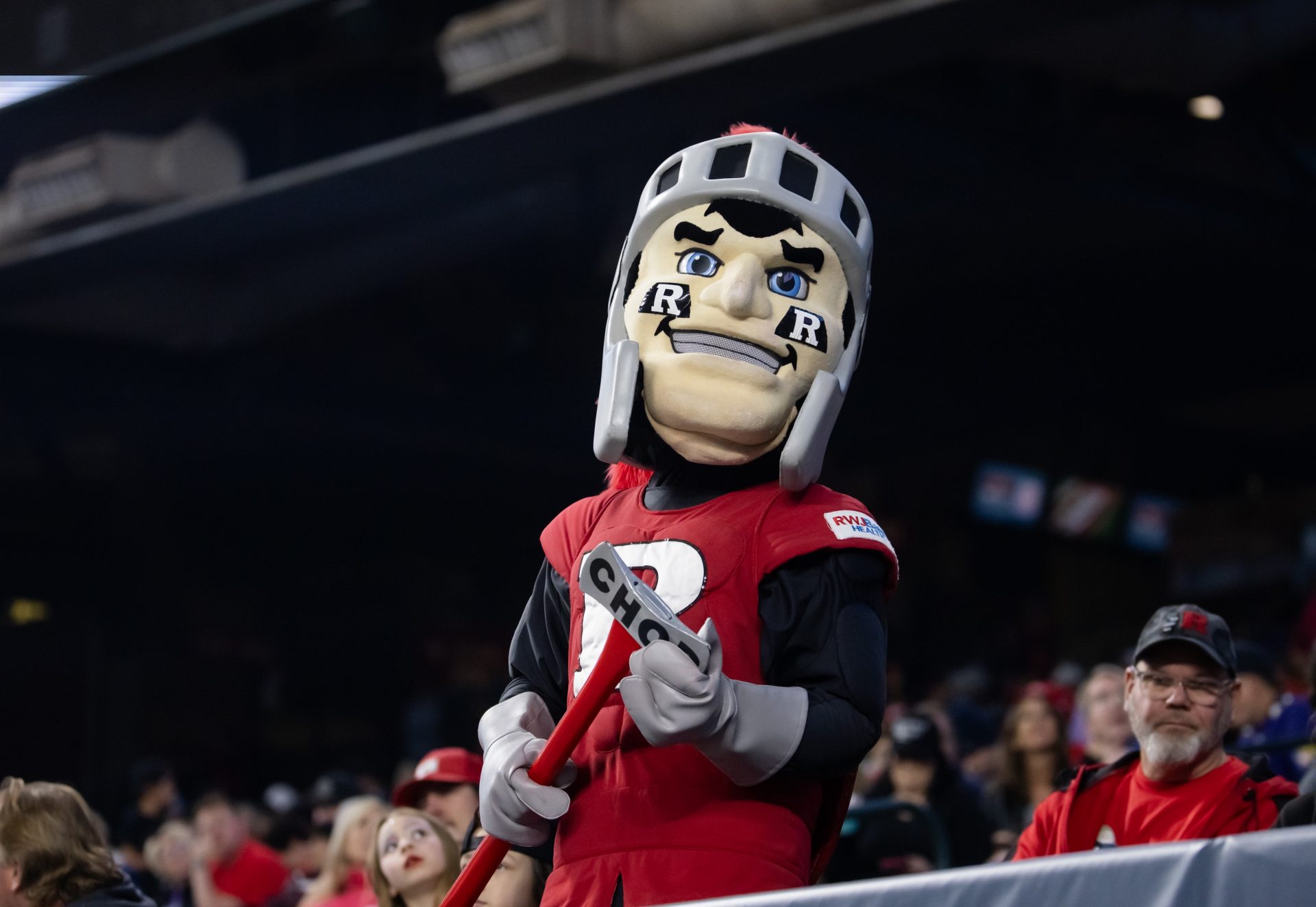Prior to college football multimillion-dollar TV deals and mascots dancing on TikTok, Rutgers was a tradition-steeped program and identity-starved. Few, though, appreciate that before the legendary Scarlet Knight stormed onto the gridiron, Rutgers was embodied by a rooster.
Yes, there were times that weren’t armor-encrusted glory and sword-wielding pride. Let us delve into the quirky story of how the Scarlet Knight evolved into a figure of the grit and glory of Rutgers University.

What Is the Rutgers Scarlet Knights Mascot?
The Scarlet Knight is Rutgers University’s official mascot—a robust, medieval-era knight clad in gleaming red armor, typically riding a white horse into SHI Stadium on game days. The live-action knight, affectionately known as The Scarlet Knight, brings Rutgers athletics energy, pageantry, and a touch of medieval swagger. He waves a sword, leads cheers, and embodies honor, courage, and Rutgers pride. But it wasn’t always this way.
Way back in the early 20th century, Rutgers’ teams didn’t even have a designated mascot. It’s actually true that students and teams were typically called The Queensmen in respect to Rutgers’ first name—Queen’s College. As college athletics expanded and identity became more relevant, Rutgers required something distinctive.
Step aside for the 1925’s surprise selection: the Chanticleer. What’s a Chanticleer, you ask? It’s a brash, prancing rooster, which lives on in Geoffrey Chaucer’s Canterbury Tales. Literary roots were well and good, but the icon, not quite. Imagine football players psyching themselves up by a mascot more suited to the barnyard than the battlefield.
Even Rutgers football coach Harvey Harman is quoted as having quipped:
“Call it a Chanticleer, call it a fighting cock, call it what you will—but everybody knows it’s a chicken.”
This snarky comment summed up the general attitude on campus. The Chanticleer just wasn’t working. Rutgers needed a mascot that communicated strength, not poultry pride.
Why Was the Rutgers Scarlet Knights Mascot?
The tide changed in 1955 when the university held a student referendum to change the mascot. The three options were Scarlet Knights, Queensmen, and Flying Dutchmen. The Scarlet Knight swept the vote, and the makeover began.
Why a knight? Well, it was brave, chivalrous, and resonated with the university colors—red being the predominant one. The image of a powerful, sword-wielding knight was a far cry from the timid Chanticleer. It also provided the university with a personality with an edge and seriousness.
In the years to come, the Scarlet Knight appeared on campus as a frequent face. In the 1980s, Rutgers created a live-action mascot that rode onto games on horseback.
The present-day Scarlet Knight—in armor, with a plumed helmet—is firing up fans at football, basketball, and other sports games. His image now symbolizes Rutgers’ feisty spirit and East Coast toughness.
The live mascot also became more public-oriented. Sir Henry was one of the character personas the student performers took on when wearing the armor. He became an institution not only on campus but also at community parades, school visits, and publicity events.
Rutgers even had tryouts for the students to play the next Scarlet Knight. They did it by judging their passion, power, and ability to wear a 30-pound suit of armor in 90-degree heat.
The makeover also burnished Rutgers’s image on the national level. When the university joined the Big Ten Conference in 2014, the Scarlet Knight symbolized the university’s academic and athletic aspirations. It stood proudly alongside mascots like Michigan’s Wolverine and Penn State’s Nittany Lion.
Chanticleer’s transformation into Scarlet Knight was something more than simple rebranding. It represented Rutgers’ change from a minor East Coast institution to a national research behemoth and athletic competitor.
KEEP READING: Rutgers 2025 Football Schedule: Where Will the Scarlet Knights End the Year?
Scarlet Knight communicated something the rooster could never: ambition, identity, and lasting appeal.
And now, when the Scarlet Knight storms onto the field to a deafening throng, he is not merely carrying a sword—he is bearing Rutgers’ heritage, its alumni tradition, and hopes of future generations. From the inaugural college football game in 1869 to today’s Saturdays in the Big Ten, Rutgers has never marched to anyone’s beat but its own.
Now, that march is led by a knight in scarlet armor.
And while the Chanticleer continues to exist as a wacky footnote in educational history, the Scarlet Knight reigns supreme—honorably, responsibly, and unmistakably Rutgers.
The College Sports Network has you covered for all the latest news, analysis, and recruiting updates. Follow us on social media and visit our website daily to stay informed on your favorite teams and conferences.

